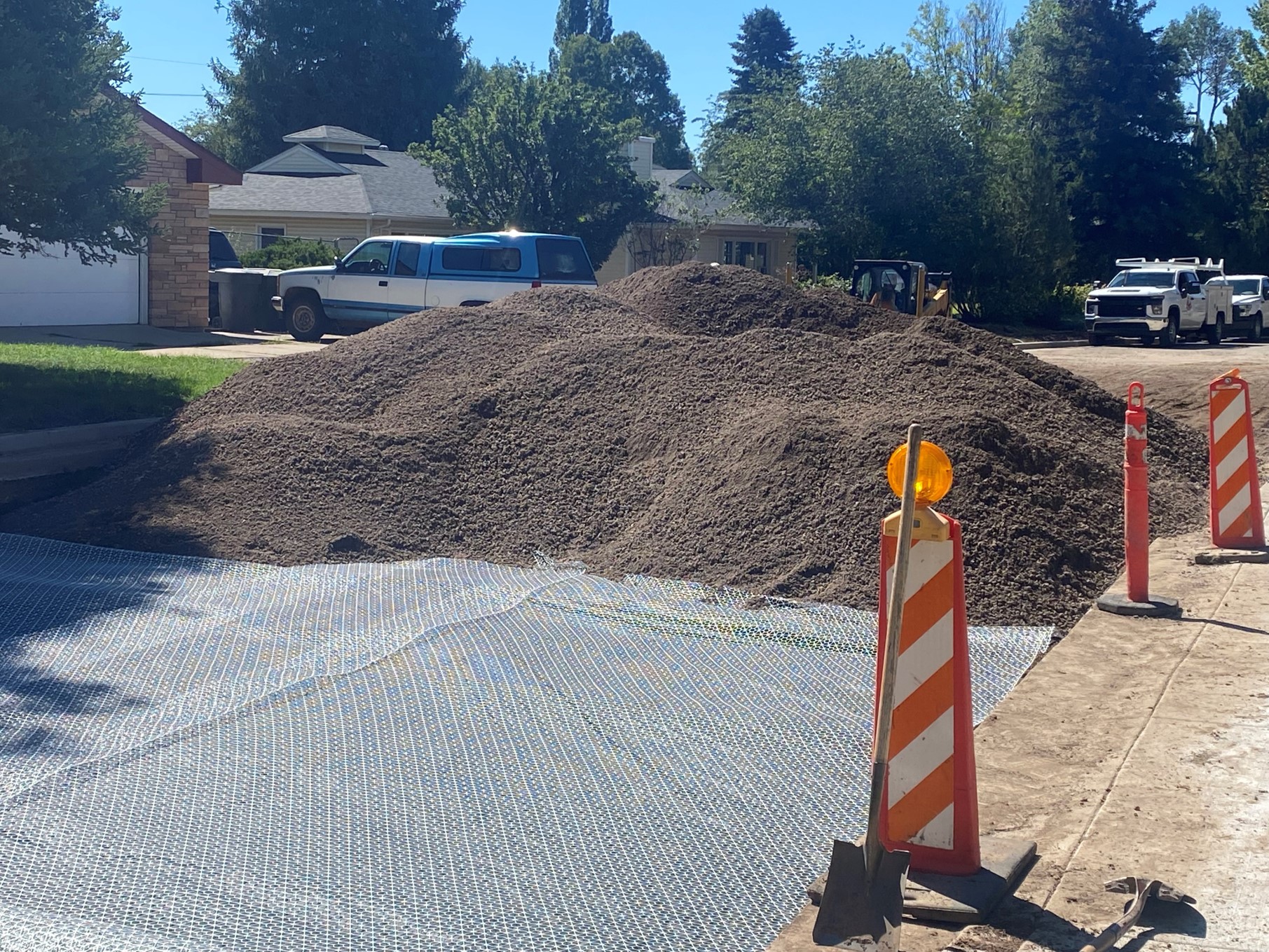Designing a Roadway Solution for Challenging Conditions
by Aaron Schlessinger, on March 09, 2023
The City of Flagstaff, Arizona is two hours north of Phoenix, AZ in the San Francisco Mountains. The geology in the project area is made up of a mixture of volcanic rocks and moisture sensitive silts and clays. Despite long-term drought conditions, Flagstaff experiences annual monsoon rains during the summer season in which they receive microbursts of rain almost every day. Runoff has increased over the past few years, to the point where the City must use sandbags in areas to prevent residents and businesses from flooding.
This project is part of a multi-phase residential neighborhood road reconstruction effort where an average pavement section of three inches asphalt on six inches of aggregate base is typically used. The City ranks their streets to determine priority for what needs to be rebuilt. The geotechnical investigation in this area showed silty clay material with higher than optimum moisture content.
To deal with these unstable subgrade conditions, the City began utilizing one and two layers of Type 2 BX geogrid with up to two feet of aggregate base course to provide a construction platform and five inches of asphalt concrete to achieve the structural design capacity. This plan had been quite expensive because of the amount of haul off, aggregate base and asphalt concrete required.
 The City project manager worked with both the local geotechnical experts, Speedie and Associates as well as Tensar to design a more cost-effective and constructable flexible pavement section. They also wanted a plan that could handle the moisture and be carried out in wet conditions, given the frequent microbursts which would likely occur during the construction. The design included the advanced InterAx® NX850 geogrid with only 15 inches of base course. The result contributed to over $200,000 in savings to the project.
The City project manager worked with both the local geotechnical experts, Speedie and Associates as well as Tensar to design a more cost-effective and constructable flexible pavement section. They also wanted a plan that could handle the moisture and be carried out in wet conditions, given the frequent microbursts which would likely occur during the construction. The design included the advanced InterAx® NX850 geogrid with only 15 inches of base course. The result contributed to over $200,000 in savings to the project.
Putting the Design to the Test
As part of the construction process, Speedie began with testing of the subgrade strength with a Dynamic Cone Penetrometer (DCP). The DCP provides the California Bearing Ratio by measuring the penetration of the device into the soil. A two-person crew typically operated the DCP and recorded data manually. The measured CBR within the first two feet showed to be 0.4%-2.0%, indicating poor construction conditions. During construction, to mitigate the effects of the weather, the contractor opened only one hundred feet of roadway at a time. If the subgrade had standing water or mud, fabric was placed to keep the geogrid dry. A layer of InterAx NX850 was then installed, followed by 9 inches of crushed concrete base. This layer was rolled and then compacted with a steel drum.
Using a fully loaded water truck, a test proof roll was performed with all of the stake holders present. For the initial test area, the truck made several passes across the section while the City, engineers, and contractor inspected the wheel path for deflection. Seeing no signs of vertical movement after several passes, the geotechnical engineer recommended that they attempt to fail the section by passing over it repeatedly. The truck rolled back and forth in a defined path, but after each pass the surface tightened and stiffened, indicating excellent confinement of the base course. An additional 6” aggregate base was added to the section, and the road was ready to be paved with hot mix asphalt, with no flexing under the asphalt truck.
The driving factor in this test was whether or not the section passed the proof roll and how much material (base course and geogrid) it took to achieve it. To test the success of the design, the City compared the previously stabilized road sections that used 24’ of aggregate base course and two layers of BX Type 2 geogrid. Those sections passed the proof roll in some areas but had to be dug out and rebuilt in other areas. The results of passing the proof roll over only a single layer of NX850 stabilizing 9 inches of base course.
“I never thought that a single layer of NX850 with less than 12 inches of aggregate base would stabilize subgrade exhibiting a CBR value of < 0.5,” said Clay Spencer EOR Speedie and Associates A UES Company. “It was a pleasant surprise and definitely a time savings contribution to the project. Proper installation of the geogrid and placement of the aggregate base attributed to the successful results and Eagle Mountain Construction met the challenge.”
Initial Cost Savings and Performance for the Future
InterAx geogrid was the right solution for the Coconino Estates Navajo Road project in Flagstaff because it offered much improved performance with almost a 2/3 reduced aggregate section, which in turn will provide a longer service life with greater cost savings. The geogrid’s advanced material science improves compaction and restricts movement over time, retaining the stiffness long term, resulting in a more resilient solution that can withstand the City’s increasingly challenging environmental conditions.
Flagstaff is one of the most challenges areas in Arizona to maintain streets because of the combination of rocky sub surfaces and moisture sensitive silty clays. Construction during the monsoon season is particularly difficult as well. Tensar worked with the City to address these conditions, resulting in significant cost savings and a road foundation that will perform long term.
Tensar InterAx geogrid is a cost-efficient way to stabilize soft soil so that you can stay on budget and on schedule. Request your free sample of InterAx geogrid today to get a firsthand look at the most advanced geogrid on the market.




